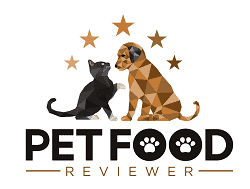It makes our popcorn taste yummy, and it’s healthy for us! But is it good flavoring for our pets? Salt is a common ingredient seen in most pet foods, but salt in excess can lead to blood pressure problems, heart conditions, and kidney dysfunctions.
So, in this article, we’ll cover everything you, as pet owners, need to know about salt in your pet’s food! We’ll discuss this controversial ingredient and see what science has to say about it in pet food.
What is Salt?
Before we get into the reason why salt is added to pet food. We first need to know what exactly salt is. Well, salt is a mineral composed of sodium & chlorine.
In general, the sodium requirement of an adult dog is approximately 200mg, whilst a growing puppy may require up to 550mg per day.
The Controversy: Why Is Salt added to Pet food?
Salt is essential for your dog’s body to function normally, so in small amounts, it’s not necessarily bad for your pet.
Today, pet food manufacturers add salt in order to increase the palatability of pet food since salt is a natural and safe flavoring.
Additionally, salt acts as a natural preservative for pet foods. Essentially, when added to pet food, salt dries up any excess water, thus preventing harmful mold and bacteria from growing.
Positives of Salt In Pet Food?
From a physiological point of view, its main functions include:
- It maintains the body’s fluid volume (i.e., blood)
- Sodium ions found in salt aid in muscle contraction and electrical impulses.
- It maintains blood pressure
- Salt prevents conditions such as gout.
- Salt assists in maintaining normal blood pressure in the heart and kidneys.
A study completed in 2008 aimed to examine and establish the required sodium contents in pet food.
This study concluded that an increase in sodium in our pet’s diet might be linked to an increase in urine excretion, so it is less likely that calcium oxalate (stones) would form.
Negatives of Salt In Pet Food?
In general, pet food contains no more than 0.3% of salt. This is the normal limit and thus is not life-threatening to pets. However, some dogs with special conditions may require a low-sodium or salt-free diet.
If you’ve got a pooch or a kitty with cardiovascular diseases such as cardiomyopathy or congestive heart failure, then they are not going to benefit from high amounts of salt in their diet.
Similarly, pets diagnosed with kidney failure may not benefit from high levels of salt in their diet simply because salt may increase the blood pressure (blood flow) to failing kidneys.
In rare cases, pet owners who cook homemade pet food may occasionally add a little too much salt. In such situations, it’s important to bear in mind that salt in high quantities can be quite toxic to pets.
Salt – The Verdict
Salt is indeed a controversial pet food ingredient as it is said to be a flavor enhancer.
However, in moderation, it can be quite beneficial to pets and is a natural part of their diet. If you’ve got a pet with cardiovascular problems or kidney failure, then a low-sodium or salt-free diet may be best for your pet.




I am trying to find out how much sodium is in Pro Plan’s Sensitive Skin and Stomach formula as well as, Royal Canin’s Hydrolyzed Protein. I have searched both sites but sodium is not listed. Can you help me find out?